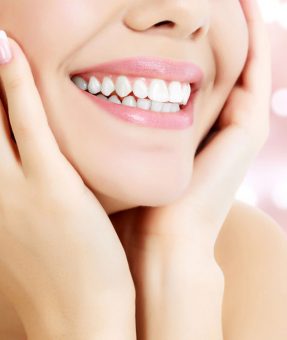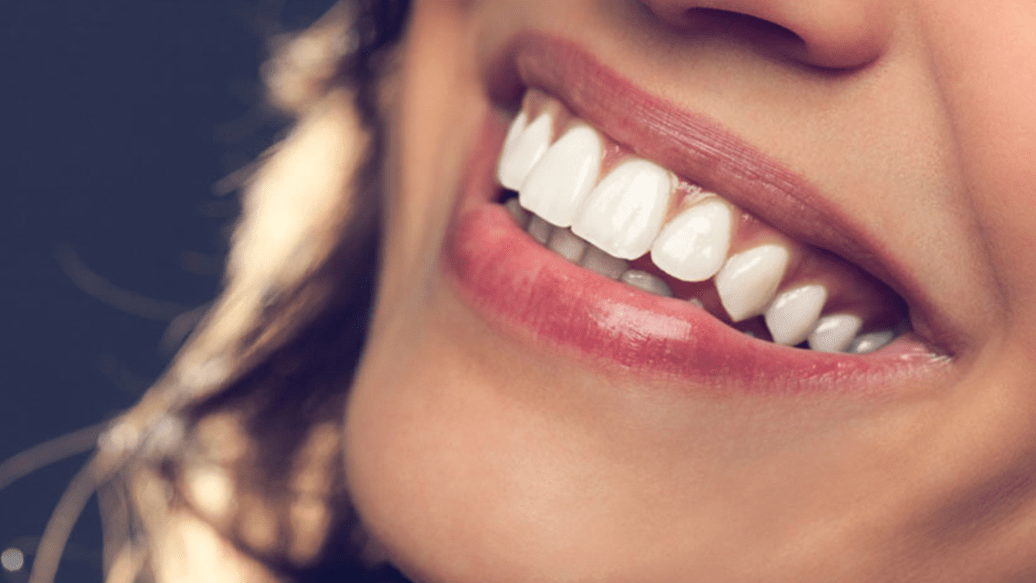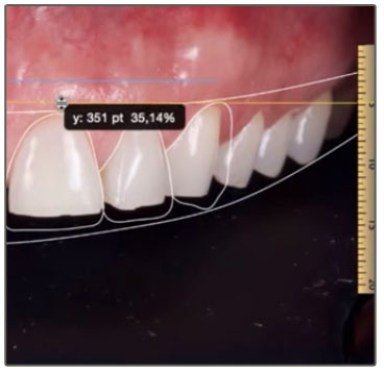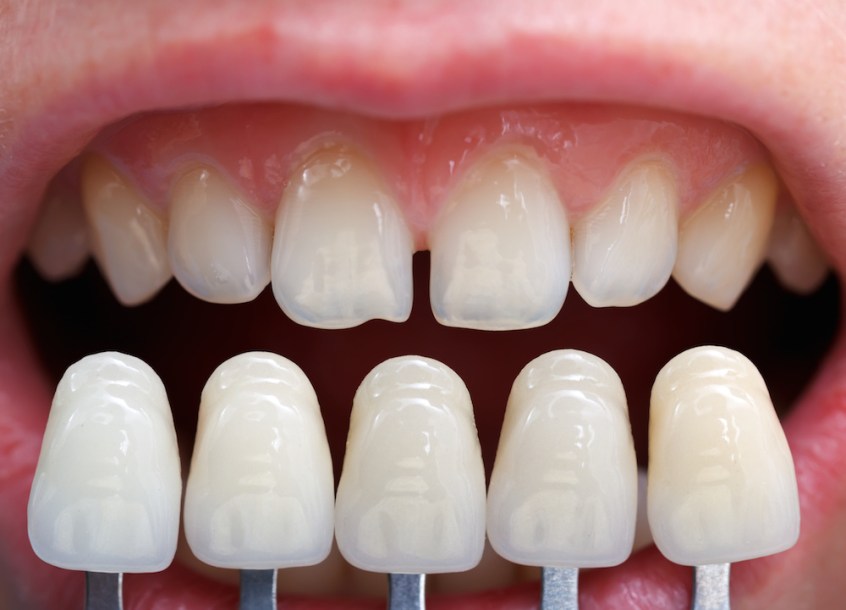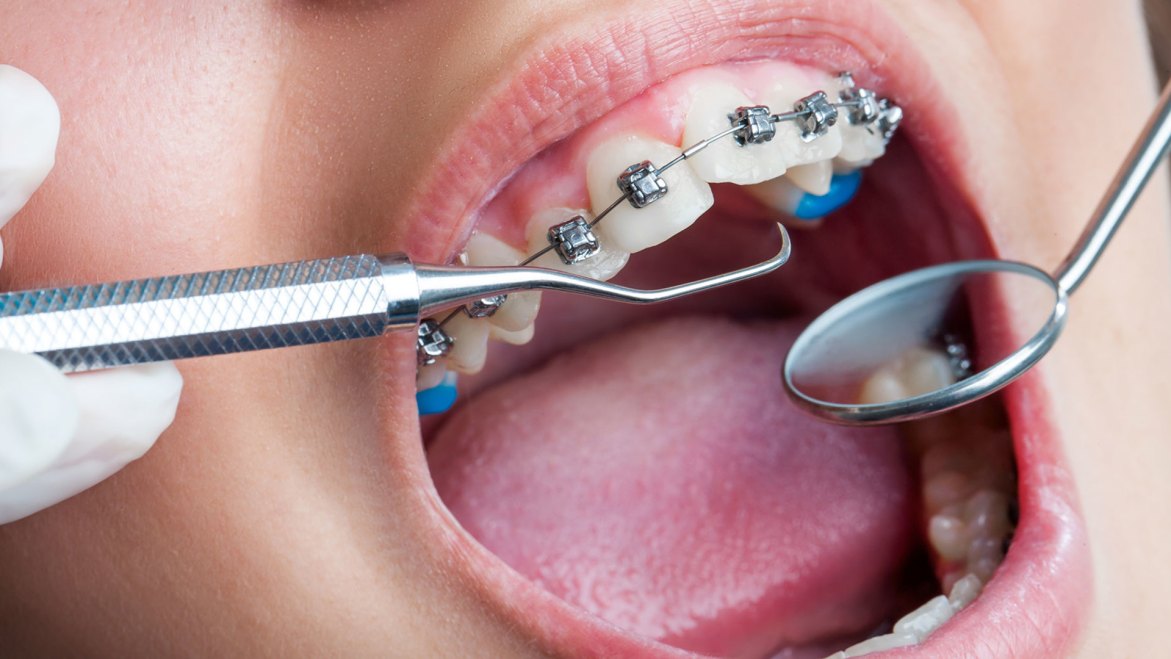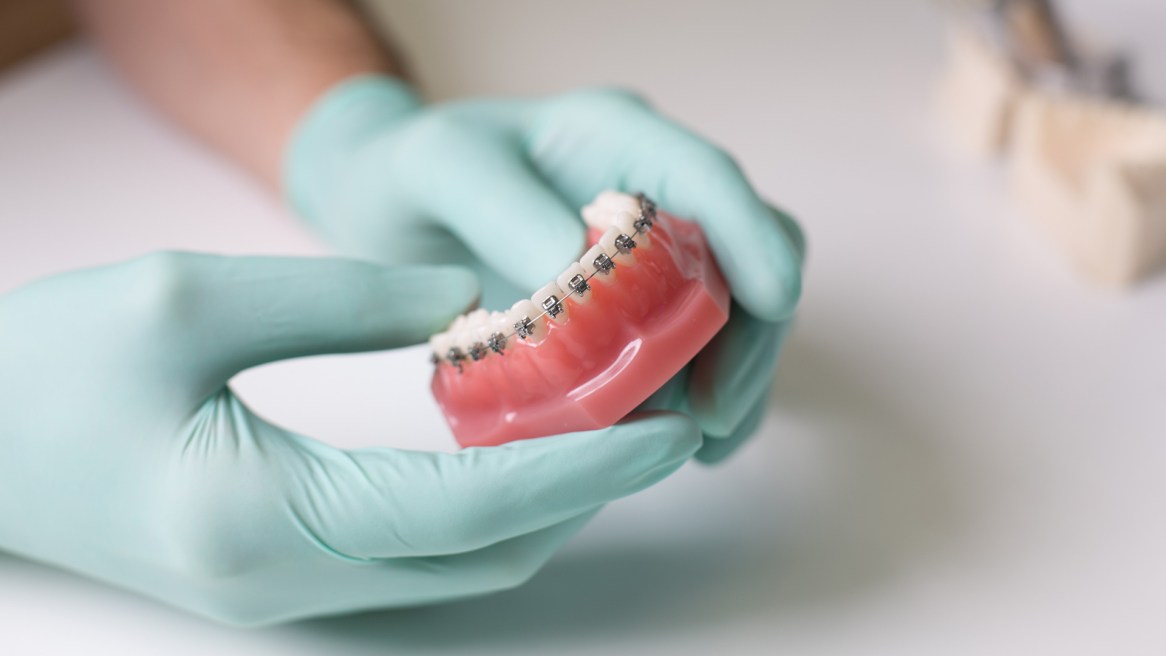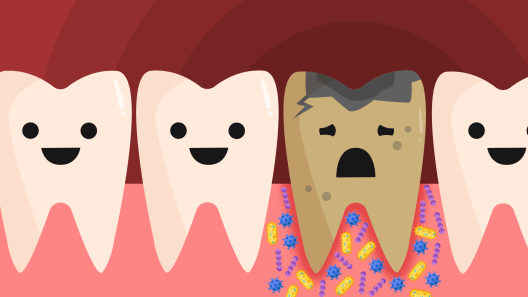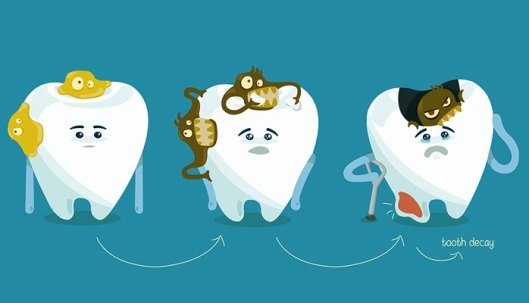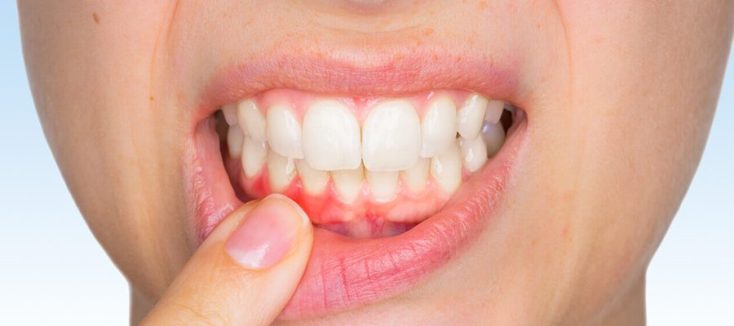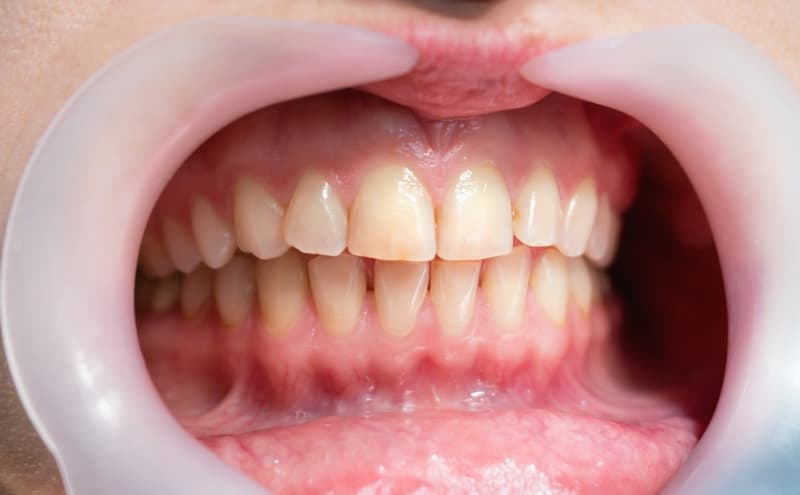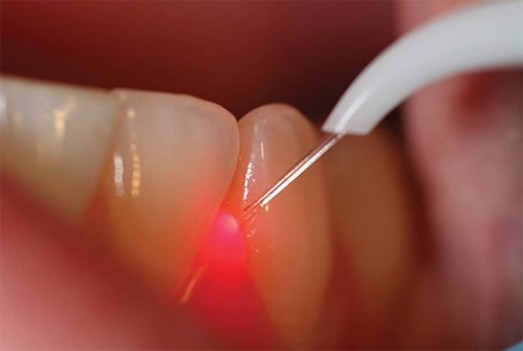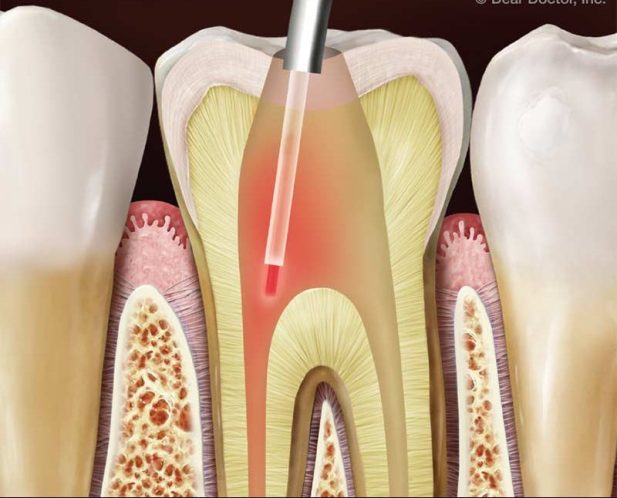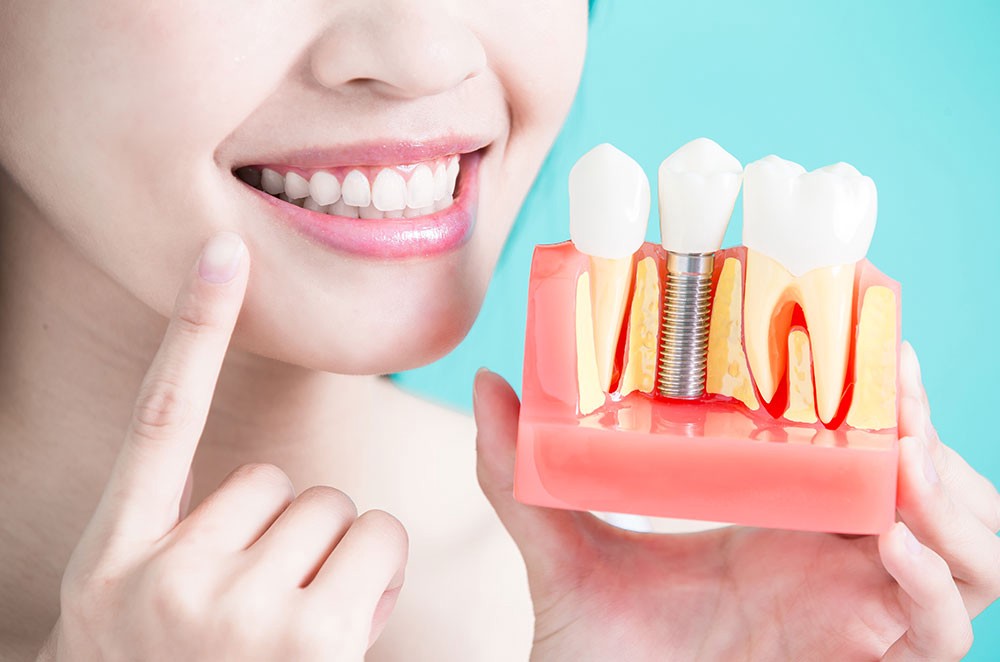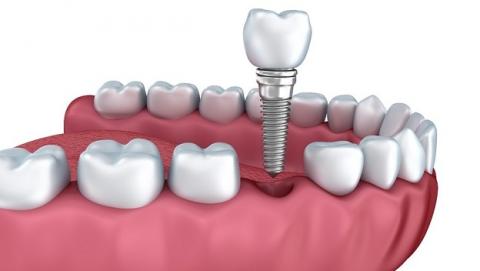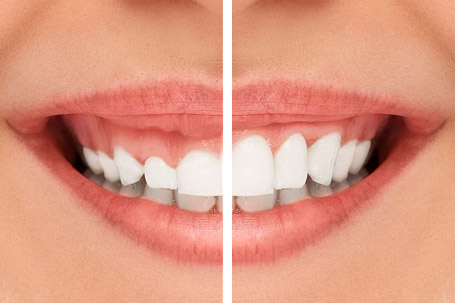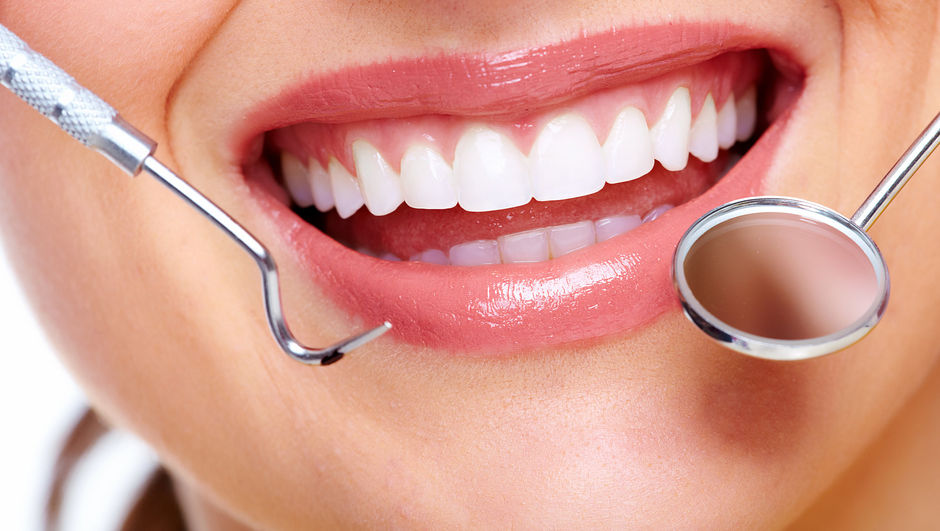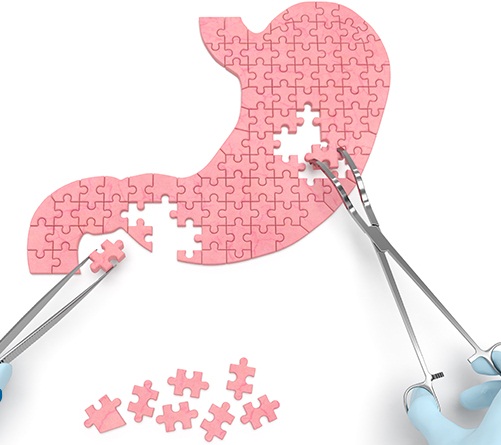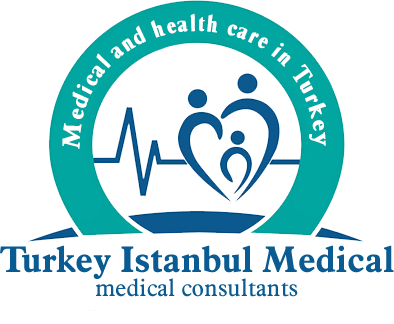Smile Design (Hollywood Smile)
As the concept of aesthetics has an important place in our lives, the importance of our smile has increased. “Aesthetic face” or “beautiful face” is our first attention is one of the elements we smile. The main elements that make up our smile are our teeth, gums, lips, cheeks and of course the harmony of all these structures. In light of these concepts, starting with having healthy teeth, all the textures are in harmony with each other, designated as a special rate with the definition “Smile Design” was developed.
Smile design doesn’t have very sharp patterns, because every person is different, so a custom-designed smile will make that person happy and aesthetically pleasing. If we look at the main lines that are the indispensable rule of aesthetics “Golden Ratio” created using dental rates, but also rate us smile or teeth appear during a conversation right “to Smile Design” are leading the details.
4 Golden Rules in Hollywood Laugh
In recent years, Hollywood stars have started to attract attention with their smile and the term “Hollywood smile” has emerged. There are 4 golden rules for the Hollywood smile:
- Teeth: The upper front teeth should be smooth and free of any visible fillers. Upper central incisors should be more prominent and leading than others. The lower incisors should also appear during the smile. The upper tooth arch should be wide and up to the upper 1st molar.
- Lips: Lips should be symmetrical. The symmetry of the lips may be related to the muscles rather than the teeth.
- Gum: The upper gum should appear about 2mm.
- Lip width: It should be at least half the width of the face.
Can Anyone Make Hollywood Smile?
Many people think about the Hollywood laugh: Can I have it done?. Dentists, aesthetic tooth designs and smile design after drawing attention to the most people can make Hollywood smile, he says. After the general examination, all dental problems are determined. The duration of treatment may vary depending on the content. Within 10 days, the set goals are usually achieved. Of course, the condition of the dentist and the patient may change the time.
What is the Treatment Process in Smile Design?
The smile design can be extended to a long period depending on the person’s preferences and can be completed in a shorter time. In the first stage, it starts by informing the person about his / her oral structure and dental health. Everything that the person is unaware or not until that day is evaluated and informed. Closure problems in teeth or serious problems that may be caused by gum problems are discussed. By considering these, accurate planning is made and a treatment plan is made for both the desired appearance and the improvement. If the individual’s problems include only teeth and gums, results are obtained every few weeks.
How To?
Two methods are used for smile design.
To be successful in smile design teeth must be healthy.
In the first examination, oral health is reviewed and treatment is planned if there are unhealthy teeth or gums.
Lamina in aesthetic procedures
The person’s professional dental photos/videos are taken. Moulds of existing teeth are taken.
Talking about how the patient imagines a smile is key to successful treatment. The patient is talked about what a smile is in his dreams.
After the digital analysis is performed on the recorded picture/video, a design and prototype model is prepared in the laboratory together with the dental technician.
In the second appointment, the prototype model is transferred to the patient’s teeth. (It is an important detail of this process that the prototype design is not applied to the teeth when applying them to the teeth). By applying the prototype model, the patient will be able to see the end shape of the smile design.
Continue
Patient and physician’s opinions are taken and necessary arrangements are made. Size/shape arrangements are made. The person proceeds with the Smile that suits him.
Fine abrasions are made on the teeth if necessary. The mould is taken and the porcelain processing stage is started in the laboratory.
Fine porcelain laminates prepared in the next session are glued to the teeth and the process is completed.
Zirconium in aesthetic procedures
Zirconium coating is applied in a similar way to other dental coating treatments. The most decisive difference between dental coating treatments is, of course, the type of material used for the coating. Just as with metal-backed veneers, small corrections and fluctuations are made on the teeth to be coated before the zirconium dental treatment is initiated.
Continue
With these corrections, the tooth is generally reduced and formed into a form that can fit the coating fully onto it. Zirconium coating, which does not cause any damage to the teeth, is given to production with CAD / CAM technology in the laboratory environment according to the measured mouth and tooth structure. Porcelain superstructure is processed on the zirconium substructure which is produced in the appropriate colour to the tooth and it is ensured that it is compatible with the tooth in the clinical environment. In the final stage, it is bonded to the tooth with the help of special tooth covering adhesives and integrated to remain permanently.
Orthodontics
Orthodontics; is a branch of dentistry that deals with correction of lower and upper jaws and tooth perplexity. Since it is more difficult to clean the perpendicular and poorly positioned teeth, there is a risk of periodontal diseases and premature loss of teeth due to tooth decay. It also causes more pressure on the jaw muscles; They may cause temporomandibular joint disorders and thus headache, back and shoulder pain.
Perpendicular teeth also affect your appearance. With orthodontic treatment, you can have a healthier mouth, a more impressive look and teeth that will stay in your mouth for longer.
Why Orthodontic Problems Occur
Disorders such as the front or back of the lower jaw are decided according to the age of the patient. Treatment is possible with orthodontic techniques if the patient is in adolescence and if the upper and lower jaw structure is left behind.
If the patient is an adult, the treatment of skeletal disorders is carried out in collaboration with orthodontics and surgery. Due to functional disorders, e.g. In cases such as mouth breathing, jaw mismatch may be observed. In a person breathing mouth, the upper part of the chin will remain in the form of V, as it will remain narrow.
Long-term use of bottle and pacifier, finger-sucking, nail-eating and habituated situations that should not be done, such as orthodontic disorders may cause. These habits should be treated as early as possible.
Preventing these habits at an early age is important for completing skeletal development.
In case the tongue is larger than it should be in the sense of structure, there are spaces in the teeth that are pulled, this causes the teeth to be spaced. If the jaw structure of the teeth is small and the teeth are large; teeth do not fit into the jaw and perplexity occurs.
Early or late loss of primary teeth may also result in the formation of perpendicular teeth. Instead of premature milk teeth falling from the mouth, the permanent tooth in the mouth shifts into this cavity. The teeth that need to come out of this place can not find space for itself is perplexity.
Time and Age of Orthodontic Treatment
Your child’s first orthodontic check should not be later than seven years of age. Although the teeth may appear properly aligned at this age, there may be a hidden closing problem. Here are some clues that point to these problems:
- Unbalanced face and jaw structure
- Breathing by mouth
- Difficulty in function (eg chewing, speaking) and closing
- Bad habits such as finger sucking, eating nails, cheeks and biting lips
- Jaw structures positioned far or forward
- Front-positioned teeth
- Non-contact or abnormal closing of the upper and lower jaw teeth
- Early or late loss of primary teeth
- Presence of perpendicular, improperly positioned or unravelled teeth
With the apparatus and wires placed on the back of the teeth, you can eliminate the perplexity of your teeth without being noticed. It can be applied to adults as well as to school-age teenagers with aesthetic concerns.
Patients who do not want to use braces can receive orthodontic treatment with transparent plaques that are produced individually. It is sufficient to use these transparent plates regularly, except for meals.
If a problem is detected at this age, your orthodontist will advise you on the best time to start treatment.
As a result of the early treatment of the problems identified in this period, the existing abnormality can either be eliminated or the second phase orthodontic treatment to be performed in advanced ages can be completed more easily and in a shorter time.
Orthodontic Treatment
Orthodontics is a speciality of dentistry. The doctor applying orthodontic treatment is called an orthodontist. Orthodontic treatment is applied to eliminate the disorders in the lower and upper jaw.
It is possible to eliminate the disorders caused by various reasons with braces. The treatment, which was previously used for aesthetic purposes, is now applied for oral and jaw health. In recent years, people have become more aware of this treatment method. Orthodontic treatment has gained importance.
What is the Duration of Orthodontic Treatment?
The duration of orthodontic treatment depends on the age of the patient, the severity of the problem and the treatment technique to be performed. However, patient compliance is the most important factor in the duration of treatment. If the patient comes to appointments regularly, if oral care is good, brackets and wires do not break frequently, given the apparatus, rubber, and so on. If properly used, treatment is completed in minimum time. If the planning is well done and the patient is in agreement, the treatment period should not exceed 2.5 years even in the most severe cases. The mean duration of treatment was 1.5 years. On the other hand, there are also treatments ending within 1 year.
Is Orthodontic Treatment a Painful Procedure?
Application sessions and intermediate sessions are painless and simple. However, wounds may form on the cheeks when the wires are first inserted. These wounds resolve spontaneously within 1 week and usually do not recur. In rare cases (rupture of the bracket, breakage of the wire, etc.), the wound may recur. Such problems can be solved with a little intervention from the physician. Also, patients are given a special mum wax that prevents stinging ilk in the first session, and the patient can place this wax in the area where the wire hurts to prevent excessive irritation that may occur until the doctor arrives.
Also, when the teeth are squeezed and hard things are eaten after the wires have been inserted for the first time and after the interim sessions, leakage occurs in the teeth. However, it passes spontaneously within 3-4 days.
Does Fixed Orthodontic Treatment Decay My Teeth?
Orthodontic treatment has no side effects such as decaying teeth. Tooth decay is a result that may or may not be orthodontic because of the lack of adequate oral hygiene. The most important point here is the care that should be shown when the braces are in our mouth.
Tooth Decay
Bacteria in the oral cavity of each person, combined with many foods taken to provide acids in the mouth.
If these acids cannot be removed from the mouth with good oral care, tooth enamel will be damaged and caries will form. In short, when acids wear out the hard surface layer of the tooth, decay occurs and tooth decay causes holes in your teeth.
How To Tell Tooth Decay
Caries is seen as dark cavities that dentists call cavities. Occasionally, caries can occur at the interface and can be diagnosed by the dentist with a handpiece or x-ray device called a sound.
Caries is usually seen on the chewing surface of the tooth or on interfaces that cannot reach the brush.
The patient usually comes to the dentist with pain, cold or warm sensitivity when he eats sweet-sour. However, in advanced bruises, pain that arouses from sleep at night and never ceases can be seen.
Causes Tooth Decay, What are the Symptoms?
Bacterial plaque, which consists of bacteria in the mouth, can form acid from residues in the mouth of sugary and bakery foods. These acids dissolve the mineral tissue of the teeth, causing the enamel disruption of the teeth and consequently the initiation of dental caries and cavities that dentists call cavities.
Of course, to detect dental caries and to be able to perform treatment before proceeding, it is necessary to recognize the symptoms well.
The most important symptoms of tooth decay are as follows:
- Tooth sensitivity
- Pain in the tooth
- A hole visible on the tooth with the naked eye
- Black or white stains on teeth
Also, it is a fact that teeth in different parts of the mouth may rot for different reasons. Anterior tooth decay can often be caused by excessive consumption of sugary food, but if left untreated, posterior tooth decay may also damage the tooth root and cause the tooth nerves to be removed. In short, whether it is small or large tooth decay, it is useful to see a specialist doctor immediately.
What are the Stages of Dental Caries?
1: The pale spot on the surface of the tooth may be a hole. Brushing and flossing with fluoride toothpaste can prevent it from turning into caries.
2: The hole is now decayed, past the hard surface layer of the decayed tooth.
3: Caries will now grow faster as the tooth reaches the softer layer of the tooth.
4: If the caries is not filled, it can cause bigger problems in deeper parts of the tooth.
How Does Dental Caries Progress?
Caries begins from the enamel layer on the surface of the tooth and proceed to the dentin layer. Dentine contains more organic matter than enamel. Therefore, caries spread more quickly in this layer. The rate of progression of caries varies greatly from person to person and from tooth to tooth. It is important to note that enamel and dentin are a defensive organ of the tooth.
How To Prevent Tooth Decay?
It is largely prevented by regularly brushing the teeth at least twice a day (before bedtime in the morning and the evening) and using floss to clean the interfaces. The important thing here is to perform effective dental cleaning without leaving any food residue in the mouth and regularly go to the dentist.
Periodontal Diseases
Gum is a weak part of the mouth. From gingivitis to periodontitis, your teeth may be exposed to too many diseases. Gingivitis is inflammation of the gums due to the presence of bacteria. It doesn’t cause pain when it first comes out. If left untreated, periodontitis can be severely affected by the gums and the patient may lose their teeth. In cases of good oral hygiene, gingivitis is reduced and its formation is prevented.
Why Gum Diseases Occur?
In each individual, the accumulation of soft bacteria layer called microbial dental plaque is observed on all tooth surfaces, between teeth and in the tooth-gum junction.
When this plaque is not sufficiently removed with a toothbrush and floss, an environment is created that allows harmful bacteria to survive, and harmful bacteria multiply. The harmful substances produced by the bacteria cause inflammation in the gums and melting of the bone surrounding the teeth. Also, microbial dental plaque hardens over time and becomes dental calculus. More plaque is deposited on the rough calculus and the progression of gum disease is accelerated.
How Does Healthy Gingival Work?
The healthy gums are light pink in colour, dull, rough and rough consistency like orange peel on the surface. Healthy gums cannot bleed by brushing or touching.
Signs and Symptoms
- Gum disease can be painless, so you need to pay attention to the following symptoms:
- Gums that bleed easily during brushing or flossing
- Swollen, reddened or sensitized gums
- Gums pulled or removed from the teeth
- Stubborn halitosis or a bad taste in the mouth
- Swinging teeth
- A difference in the arrangement of teeth
- A partial prosthesis (partial prosthesis) in the mouth difference
- Visible pus around the teeth and gums
- Sharp chewing on food
- Hypersensitive to cold or heat
What is Gingival Recession?
Gingival recession is the displacement of the gum towards the root tip, leaving the root surface exposed. Teeth tenderness, root caries and aesthetic problems can be seen in patients with gingival recession.
What Causes Gum Disease?
The main cause of gum disease is a sticky transparent layer that is firmly attached to the tooth called a bacterial plaque. You can notice the plaque by scratching your teeth with your fingernail. One milligram of the plate contains between 200 and 500 million bacteria. Also, the following factors affect your gingival health.
- SMOKING As we all know, smoking causes many important diseases such as cancer, lung and heart diseases. It is also very harmful to the oral mucosa and gums. It causes softening of gums and development of gingival diseases.
-
GENETIC FACTORS
According to the researches, there is a genetic predisposition of 30%. Also, poor oral care increases the probability of developing gum disease by 6 times. If there is a person with gum problems in the family, you should also check with a gum specialist.
- HORMONAL CHANGES During periods of intense hormonal changes such as pregnancy, puberty, menopause and menstruation, you should also take care of your oral hygiene. Your gums become more sensitive during these periods. Increased susceptibility to gum disease.
- STRESS In addition to being one of the causes of many diseases such as hypertension and cancer, it is also a risk factor for gingival diseases. Research has shown that stress, including periodontal diseases, makes it difficult for the body to fight infection.
- DRUG USE Birth control pills, anti-depressants, heart medications affect your oral health. Therefore, if you are taking any of these medications, please warn your dentist and pay special attention to your oral hygiene.
- SQUEEZİNG OR GRİNDİNG teeth Reduces the force between the teeth and gums, causing periodontal tissue destruction. One reason for withdrawal in the gums is to squeeze. This must be stopped by installing a night plate.
- DIABETES-SUGAR DISEASE Diabetes patients are at high risk for periodontal infection. They must also have routine gum checks performed by a gingiva specialist (periodontologist) and take extra care in oral hygiene.
- BAD NUTRITION Causes the body’s immune system to weaken and, consequently, difficult to fight infections, including gum infection.
How is the Treatment Performed?
The first step of the treatment is the removal of hard deposits on the teeth by your doctor with special tools. You will be taught how to clean the disease-causing microbial dental plaque with a brush and floss with the right technique for the success of the treatment. In simple gingivitis, this treatment alone may be sufficient. In some cases, enlarged gums can be removed painless, bleeding and seamless with the latest technology devices such as a laser.
After all these applications, the patients are taken to 3-6-12 month controls for the maintenance of gingival health. How often you will come to the clinic will be determined by your physician according to the severity of the disease and the presence of certain risk factors. Your brushing and interface cleaning will be reassessed at each check. The success of the gingival treatment is directly related to the patient’s compliance and motivation.
For Healthy Teeth:
- Brush and floss correctly every day,
- Eat a balanced diet, avoid empty calories and very sticky foods,
- Learn to examine yourself and do this routinely. So you can capture the first signals of any oral or dental changes,
- Visit your dentist at least twice a year for a checkup and dental calculus cleaning.
Laser-Assisted Dentistry
Until recently, the laser energy used only in soft tissue and teeth whitening processes in the field of dentistry has become more active as a result of rapidly developing technology and scientific researches.
There was no pain due to laser friction, heat and vibration. Therefore, the need for anaesthesia is greatly reduced and some treatments can be completed without any anaesthesia.
There is almost no bleeding during the surgical procedures with a laser. It eliminates the possibility of swelling, complications and discomfort after each surgical procedure.
In implant applications, in cases where it is necessary to make an implant immediately after extraction, the success of the implants to be made as a result of the sterilization of the extraction zone with laser energy is increased, and the surgical procedure required to make the superstructure (fixed tooth) is simplified by using laser and time can be saved.
In patients with genetical hyperpigmentation of the gums (excessive purple discolouration), this problem can be eliminated by laser peeling for 3 or 4 sessions.
Since the disinfection and sterilization are provided in the areas where the laser is used, the risks of re-infection and caries starts are eliminated.
The use of laser as a supportive treatment in the treatment of periodontal gingivitis is increasing the success of the treatment thanks to the sterilization created by the laser energy in the environment.
Is it an Appropriate Treatment for All Ages?
Pain, needles and anaesthesia because there is no condition for a dentist fear of any age is a form of treatment suitable for people. Classically, children can be afraid of sounds and needles during the procedure. With these advantages, it provides important facilities especially in the treatment of pediatric patients.
Is Laser Harmful for General Health?
The laser is non-ionizing light and does not accumulate in tissue. Therefore, it does not have any damaging properties like an x-ray. It is important to use the correct doses using the appropriate laser wavelength. It can be used in everyone, including pregnant women, children and heart patients.
Laser Support for Teeth Whitening
Compared to conventional methods, the laser not only shortens the session time but also increases the permanence of bleaching.
Laser Dental Treatments Prevent Caries
Some people suffer from pain and pain, and others simply postpone sitting in the dentist’s chair because they fear the sound of the instrument during the procedure. However, with the diş laser dental treatments çıkan that have become prominent in recent years, it is possible to have a painless and comfortable treatment process without contacting the tooth.
What are the Advantages?
In laser-assisted implant applications, the recovery period is short since the procedure is performed only in the area where the implant will be applied.
Before the application, three-dimensional computed tomography is obtained from the patient and all details are obtained about the width and depth of the bone tissue where the implant will be placed. Thus, no surprises are encountered during the operation and the operation is concluded in a short time.
In the case of single tooth deficiencies, when the appropriate bone is found with laser-assisted implant application, the implant can be applied immediately and the ceramic reconstruction by CAD-CAM method can be applied to the patient by glueing the permanent tooth in about two hours.
What Kind of Treatments Can be Performed With a Laser in Dentistry?
- All kinds of treatments involving hard and soft tissues in the mouth can be performed with Delight Laser.
- Removal of decayed tissues in teeth,
- Removal of bone in the extraction of teeth embedded in the bone,
- Root canal expansion and disinfection, treatment of gingival infection,
- To increase the length of teeth by cutting the gums for aesthetic purposes,
- Tongue and lip ligament incisions, treatment of oral aphthae and ulcers, removal of tooth sensitivity,
- The removal of discolourations due to hyper-pigmentation in the gums is done successfully by using a laser.
Implant Treatment
It can be lost as a result of caries or gingival disease due to teeth, inadequate care, genetic factors that should exist in the mouth during human life. As a result of these losses, voids are formed in the mouth and chewing function starts to fail.
Methods have been developed over the years to maintain the chewing function which is the first step of the digestive system in a healthy way. Although removable prosthesis provides some degree of chewing, it brings uncomfortable and aesthetic problems. Bridge systems, on the other hand, cause minor damage as a result of some abrasion of the teeth used as abutments. Due to these negative reasons, implant systems have emerged to replace the lost teeth.
In dental implants, titanium screws are replaced with the roots of the lost teeth and fixed or movable prostheses are prepared by using the support. A very small surgical procedure is applied in the implant procedure.
What is the Implant?
Implants; an artificial tooth root, usually screw-shaped, in the jaw for the replacement of missing teeth. Since the jaw bone perceives titanium as a part of the body, the implants are mostly made of titanium and the success rate of the implants is high due to the high tissue compatibility.
Reason for finding a very common use in dentistry; This is because it can be applied in a wide range from single tooth deficiencies to patients without any teeth. This application is carried out without any intervention to the adjacent teeth. Both the feeling of chewing is the closest to normal and the possibility of treatment without interfering with other teeth; In our century, implant-containing methods have become one of the most applied treatment methods.
Main Advantages of Implant Treatment
Protection of adjacent teeth against cutting.
Prevention of jaw bone formation due to a missing tooth.
Easier dental protection than bridge applications. The advantage of making each porcelain tooth unique like natural teeth, which makes dental hygiene regulation higher, improves the retention of the mandibular lower jaw.
Who Can Apply İmplant Treatment?
Implant treatment is applied to individuals over 18 years of age who have completed jaw and facial development. Whether the jaw structure is suitable for the implant before treatment is determined by X-rays. Diabetes patients must be in order before treatment. In patients who use blood thinners, drugs are discontinued before treatment. Those with bone resorption may receive implant treatment after receiving appropriate treatment.
What Determines the Decision of Implant Treatment?
- The general medical condition of the patient
- Patient’s age
- Cavity due to the missing tooth
- Sound competence of the jaw bone
- The density of the jaw bone
- Oral health
- To smoke
Today, dental implant applications, meticulous preliminary analysis, precision application techniques, combined with sterilization and post-treatment treatment is the easiest way to get appropriate treatment.
How is the İmplant Performed?
Implant treatment is performed by giving the patient mild sedation. A detailed examination and X-ray are required before the procedure. The jawbones and remaining teeth are measured. There are two options for the placement of dental implants. In a one-step procedure, the temporary cap is attached after the implant is placed. In a two-stage procedure, after the dental implant is inserted, it is covered with gum and allowed to heal.
The prosthetic heads are then attached. In both cases, a temporary bridge is placed and a recovery period of 3 months for the lower jaw and six months for the upper jaw is expected. Sometimes new implants can be attached to dental implants immediately. With the dental implant, the patient can safely laugh and eat.
Zirconium implants are new generation implants made to increase the resistance of titanium implants. It is especially used to increase endurance in the narrow jaw bone. It is no different from titanium except durability.
Zirconium is also used in tooth coating. Zirconium is whiteness close to the natural tooth and reflects light. Therefore, it is also aesthetically useful as well as durability. Does not wear and does not leave a metal taste in the mouth. No colour change occurs over time. No harm to the body.
After Treatment
As in all dental treatments, oral hygiene is very important in implant treatment. The life of the work is closely related to oral hygiene. A person who has received implant treatment needs to take advanced care of oral hygiene. Patients with poor oral hygiene are likely to lose the implant in the coming years.
Is it a Painful Treatment?
Appropriate anaesthesia methods are used when the implant is placed. Therefore, one does not feel pain or pain. It is possible to perform general or local anaesthesia according to the preference and condition of the person. Often, in the evening of the implant, the person may experience slight pain, but this pain is relieved by low-dose painkillers.
If Implants Are Not Accepted by the Body?
The implants are made of materials that are not rejected by the body and do not cause allergic reactions. For this reason, it has been researched for many years and is the product of long-term studies. They are usually made of titanium. Metals such as titanium are not part of the living organism and cannot be rejected by the body. Therefore, it is not possible for the body to produce antigens against them and to reject them as in heart and kidney transplants.
Can an İmplant Be Applied After Tooth Extraction?
In most cases, if the bone structure in the area to be implanted is appropriate, it can be implanted very easily immediately after tooth extraction. Generally, the implant is supported by bone dust in the region after this procedure.
Is the Brand of the Implant Important? Is the Quality of the İmplant Possible?
The company has been in the market for a long time and brings many experiences. By reflecting these experiences on the implants, the companies provide the best service for the implants. Also, it is an advantage for the implant that it can be easily found in many different purpose parts called the spacer of the implants. The implant brand must be quality certified products that the physician who is treating and knows the experience and trust. We can call the implant, which has many good features together, a quality implant.
Chinese origin implants were observed to be incompatible in the lower jaw. Therefore, we do not treat our products of Chinese origin.
World-leading countries in implant treatment: Switzerland, America, Germany and Turkey.
What are the Requirements for a Successful İmplant Brand?
- İmplant brands in the market there are “leaders” to move the position of what we call multiple positive criteria to carry its own and can be summarized as to ensure the continuity of it.
- Being a worldwide brand is possible by proving that it is a worldwide brand as in all other brands.
- To be original, not content with the existing ones, to have the design to make it unique.
- To go beyond the criteria defined by the physicians who are the practitioners of the implants it produces as “deficiency ve and to change and improve them.
- Have a worldwide vision and distribution network.
- Have distributors who can carry this vision in various countries.
- Organize many scientific symposiums, congresses and conferences for physicians every year and to look to the future in the light of these scientific meetings.
- To be permanent, to give confidence to physicians and patients that they are permanent.
- To allocate sufficient capital to this business and to invest a significant portion of its capital in each period and at any time.
- Having experienced, creative technicians, engineers, chemists, scientists and creating all kinds of opportunities for them.
Gingivoplasty
The “gummy smile” of the gums when laughing can cause many people to hesitate to smile. The aesthetic satisfaction of the smile is of great importance for our expression of our body language and our social life. Among the reasons for this problem; short teeth, long upper jaw structure, over-working laughing muscles, the effect of the nose to the shape of the lip are factors such as.
Gingivectomy and gingivoplasty can help to overcome this problem. Also, if lengthening of the teeth is planned, gingivoplasty or gingivectomy can be performed at the same time.
What are the Advantages of Gum Aesthetics?
It is very important to treat gum disorders because it can disrupt the tooth structure and cause tooth loss. In addition to preventing tooth loss, thanks to gingival aesthetics;
- Prevention of dental inflammation,
- The teeth are arranged as required.
- Get rid of aesthetic concerns and eliminate negative effects on your social and professional life,
- The tissues your teeth need are made healthier,
- Bleeding of gums and mouth sores are prevented
Gum Shaping
Gum shaping is generally aesthetic and is performed by specialist periodontologists. This operation aims to bring the gums to the desired shape. Gingival shaping can be performed due to discomfort in the gums that usually appear during the smile and inequality in the tooth sizes. The condition of the person’s teeth and gums must be healthy before the procedure is performed.
For example; If there is swelling or bleeding in the gum, the outcome of the gum shaping treatment is unpredictable. For the procedure to be performed, the existing disorders in the teeth or gums should be treated and the gums of the patient should be adapted to the shaping process. The duration and difficulty level varies depending on how many teeth are formed. The process usually takes between 15 minutes and 1 hour. In laser-assisted gingiva shaping, anaesthesia is not required in the majority of cases.
How is Gingivoktemi made?
First of all, the patient’s teeth are cleaned with the help of some materials used plaque and stones, then anaesthetized and anaesthetized. The process may take from 1 minute to 1 hour depending on the number of teeth. After the procedure, the patient should keep the mouth and the environment clean. A protective bandage can be used for rapid recovery and no floss or toothbrush should be used.
Gingivectomy Techniques
- Surgical gingivectomy.
- Cryocerrah of.
- Laser surgery.
- Methods such as chemosurgery are used.
What is Gingivoplasty?
Gingivoplasty is the process of shaping healthy gum tissues around the teeth. This aesthetic application can be applied after gingivectomy in some cases. The gingivoplasty is reshaped to the gums after removal of the lengthened teeth and excessively visible portions. Thus, the necessary symmetry is provided, allowing the teeth to appear more uniform.
How are Gingivectomy and Gingivoplasty Performed?
First of all, if you have dental stones or plaques, they should be cleaned. Your gums are anaesthetized with local anaesthesia. With some special surgical instruments, cautery or lasers, your physician will give your gums the shape they had previously planned. Gingivectomy may take from a few minutes to 1 hour depending on the number of teeth to be treated. Gingivoplasty is a few minute procedures.
After Gingivectomy and Gingivoplasty
There is no difficult period after the procedure. As long as the physician’s recommendations are followed, there is no problem.
A pat called a periodontal pat is placed on your gums. It can stay on your gums for an average of 5-7 days. After the procedure, you do not have to restrict your daily life. However, you will need to pay attention to some criteria.
During the healing period, the mouth should be kept clean. Extremely hot – cold and spicy foods should be paid for a week.
Use the mouthwash prescribed by your doctor or the prescribed medication, if deemed necessary.
Brush your gums again with a very soft toothbrush as instructed by your doctor. Always use dental floss or interface brush.
How Long is the Postoperative Recovery?
There is no pain during the treatment performed under local anaesthesia. Pain relief may be used for post-operative pain. Laser treatments are generally used in the treatments and since there is no bleeding, the healing process is faster than other treatment methods. The healing process of gingival esthetics takes place in 10-14 days.
